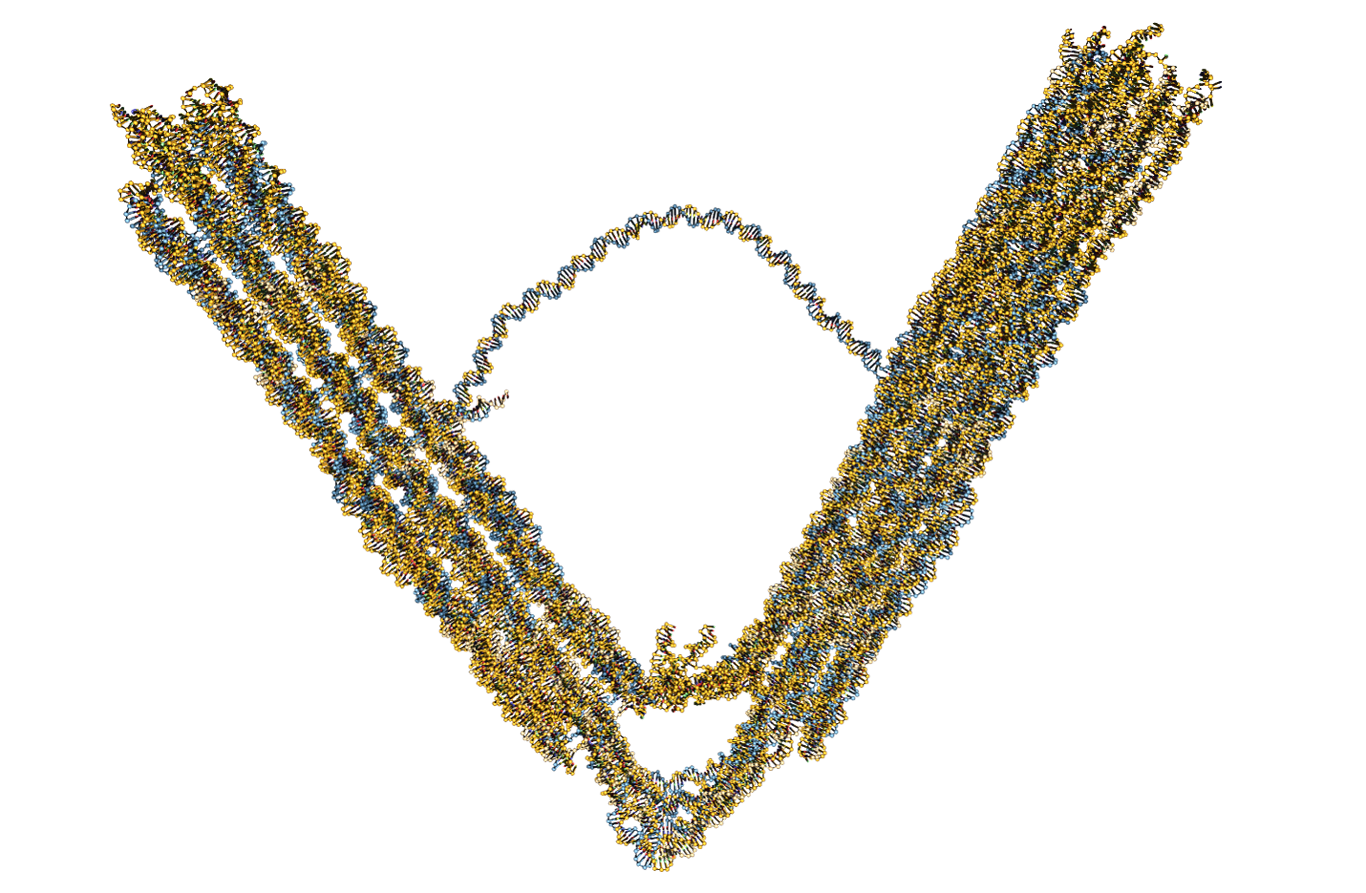
An international team of scientists has recently developed a novel type of nano-engine made of DNA. It is driven by a clever mechanism that can perform pulsing movements. The researchers are now planning to fit it with a coupling and install it as a drive in complex nanomachines. Their results were published today in the journal Nature Nanotechnology.
Petr Šulc, an assistant professor at Arizona State University's School of Molecular Sciences and the Biodesign Center for Molecular Design and Biomimetics, has collaborated with Professor Michael Famulok (project lead) from the University of Bonn, Germany, and Professor Nils Walter from the University of Michigan on this project.
Šulc has used his group’s computer modeling tools to gain insights into the design and operation of this leaf-spring nano-engine. The structure is comprised of almost 14,000 nucleotides, which form the basic structural units of DNA.
“Being able to simulate motion in such a large nanostructure would be impossible without oxDNA, the computer model that our group uses for design of DNA nanostructures,” said Šulc. “It is the first time that a chemically powered DNA nanotechnology motor has been successfully engineered. We are very excited that our research methods could help with studying it, and we are looking forward to building even more complex nanodevices in the future.”
The engine is similar to a hand grip strength trainer — two handles are connected by a spring in a V-shaped structure. However, the motor is around one million times smaller. In a hand grip strength trainer, you squeeze the handles together against the resistance of the spring. Once you release your grip, the spring pushes the handles back to their original position. “Our motor uses a very similar principle,” said Famulok. “But the handles are not pressed together but rather pulled together.”
The researchers have repurposed a mechanism without which there would be no plants or animals on Earth. Every cell is equipped with a sort of library that contains the blueprints for all the types of proteins that each cell needs to perform its function. If the cell wants to produce a certain type of protein, it orders a copy from the respective blueprint. This transcript is produced by the enzymes called RNA polymerases.
The original blueprint consists of long strands of DNA. The RNA polymerases move along these strands and copy the stored information letter by letter.
“We took an RNA polymerase and attached it to one of the handles in our nanomachine,” said Famulok. “In close proximity, we also strained a DNA strand between the two handles. The polymerase grabs on to this strand to copy it. It pulls itself along the strand and the nontranscribed section becomes increasingly smaller. This pulls the second handle bit by bit towards the first one, compressing the spring at the same time.”
The DNA strand between the handles contains a particular sequence of letters near its end. This so-called termination sequence signals to the polymerase that it should let go of the DNA. The spring can then relax again, and the handles move apart. This brings the start sequence of the strand close to the polymerase, and the molecular copier can start a new transcription process. The cycle then repeats.
“In this way, our nanomotor performs a pulsing action,” explained Mathias Centola, who is part of the research group headed by Famulok and who carried out a large proportion of the experiments.
This motor needs energy just like any other type of motor. In this case, it is provided by the “alphabet soup” from which the polymerase produces the transcripts. Every one of these letters (in technical terminology, nucleotides) has a small tail consisting of three phosphate groups — a triphosphate. In order to attach a new letter to an existing sentence, the polymerase has to remove two of these phosphate groups. That releases energy it can use for linking the letters together. “Our motor thus uses nucleotide triphosphates as fuel,” said Famulok. “It can only continue to run when a sufficient number of them are available.”
The researchers were able to demonstrate that the motor can be easily combined with other structures. This should make it possible for it to, for example, wander across a surface — similar to an inchworm that pulls itself along a branch in its own characteristic style. “We are also planning to produce a type of clutch that will allow us to only utilize the power of the motor at certain times and otherwise leave it to idle,” said Famulok. In the long term, the motor could become the heart of a complex nanomachine. “However, there is still a lot of work to be done before we reach that stage.”

